Fentanyl Addiction Treatment in California
Although fentanyl can be legally prescribed for, most of the fentanyl responsible for the current overdose crisis is manufactured illegally. If potency and dose are not honestly conveyed, it can be very easy for someone to overdose on fentanyl or the drug cocktail to which it has been added. The amount of fentanyl that can cause an overdose in an adult user is about the size of a few grains of salt.
Why is Fentanyl Dangerous?
An overdose or lethal dose can happen when an individual takes fentanyl without even knowing it. Street manufacturers may add it to counterfeit prescription pills and other illegal drugs such as methamphetamine, heroin, cocaine, or xylazine to boost their effects. This can be especially dangerous for individuals who have never before used fentanyl.
Signs and Symptoms of Fentanyl Addiction
- Constricted or pinpoint pupils
- Sedation and drowsiness
- Slow breathing
- Nausea and vomiting
- Constipation
- Skin picking or itching
- Weight loss
- Poor hygiene
- Intense cravings: Users have extreme, uncontrollable urges to use fentanyl.
- Mood swings: Users may display irritability, anxiety, depression, or euphoria.
- Anxiety and agitation: This is most likely to occur when the user is unable to acquire the drug.
- Depression: There may be feelings of sadness, hopelessness, and loss of motivation.
- Paranoia: Fentanyl users may show suspiciousness or a distrust of others.
- Lack of motivation: They may exhibit a decreased interest in previously enjoyable activities.
- Denial: People addicted to fentanyl often refuse to admit there is a problem.
- Change in priorities and routine: The person’s life may start to be all about obtaining and using fentanyl and neglecting responsibilities at school, work, or home.
- Secretiveness: Individuals try to hide their drug use by lying about their activities and where they go.
- Withdrawing from social activities: There may be a decrease in interest in hobbies or spending time with family and friends.
- Financial issues: They may have unexplained financial problems, borrowing or stealing money to support their drug use.
- Legal problems: There may be arrests for drug-related or other crimes.
- Doctor shopping: Users often visit multiple doctors to acquire more prescriptions for fentanyl or other opioids.
- Using fentanyl in risky situations: Many fentanyl users continue to use it despite negative outcomes or in dangerous situations.
Because fentanyl has the potential to be incredibly addictive, a person may experience withdrawal symptoms if they suddenly cease using fentanyl without any kind of medical support.
Stopping use can cause withdrawal symptoms, including:
- Muscle aches
- Agitation
- Anxiety
- Insomnia
- Runny nose
- Sweating
- Abdominal cramping
- Diarrhea
- Dilated pupils
- Nausea and vomiting
Treatment Options for Fentanyl Addiction
The first step in addiction treatment is often medical detoxification. A medical detox helps manage severe withdrawal symptoms that occur when stopping fentanyl use. The medications commonly used to ease withdrawal symptoms and cravings include:
- Naltrexone: Blocks opioid effects and reduces cravings
- Methadone: Reduces withdrawal symptoms and cravings
- Buprenorphine: Eases cravings and withdrawal symptoms
Behavioral therapies help people understand the root causes of their addiction and help them develop coping techniques. Common addiction-focused therapies include:
- Cognitive Behavioral Therapy (CBT): CBT helps individuals to recognize and change negative thought patterns and behaviors linked to drug use.
- Motivational Interviewing (MI): MI helps people examine and resolve their hesitancy about treatment and recovery.
- Eye Movement Desensitization and Reprocessing (EMDR): EMDR helps people process psychological trauma (without fully articulating the event) that may contribute to addiction.
- Family Therapy: This form of therapy involves family members in the treatment process to help educate and improve communication and support systems.
- Group Therapy: Group sessions provide a supportive environment where people can share their experiences and learn from their recovery peers.
In an inpatient or residential treatment program, the individual lives at the treatment facility with round-the-clock supervision in a structured environment. This is ideal for people with severe addiction or those with co-occurring mental health disorders, known as a dual diagnosis.
An outpatient program allows people to live at home while attending therapy sessions and receiving medication. There are several levels of care in outpatient treatment:
- Partial Hospitalization Program (PHP): PHPs provide the highest level of outpatient treatment. Individuals usually attend full days at the facility and receive a comparable level of treatment to residential treatment. This is appropriate for individuals with a strong support system outside the treatment program.
- Intensive Outpatient Program (IOP): IOPs typically offer treatment several days per week for a few hours per day. IOP can be used by individuals with a less severe addiction and a strong support system at home.
- Outpatient Program (OP): A standard outpatient program is less intense from the other levels of outpatient care. OPs can serve as step-down programs after completing a higher level of care to reduce the likelihood of relapse.
- Telehealth treatment: Telehealth offers convenience and flexibility in treatment. Virtual sessions can occur whenever convenient for the individual and the therapist. The format provides safe spaces to talk with treatment professionals and/a group therapy cohort without privacy. It can also be used to augment in-person outpatient treatment.
Mental health conditions and substance use disorders frequently occur together. However, it doesn’t necessarily mean that one caused the other.
There are three possible reasons for the possible correlation between addiction and mental health disorders:
- Common risk factors, including genetics, stress, and trauma.
- People may manage their symptoms with addictive substances, known as self-medication.
- Addiction can aggravate the symptoms of or accelerate the development of a mental disorder due to changes in brain chemistry.
A dual diagnosis program is crucial for individuals who are experiencing a mental health disorder co-occurring with a substance use disorder. Both conditions will be treated at the same time, with special attention paid to healthy mental health management and attention on how the two conditions interact with each other
Because recovery is a lifelong journey. Continuing treatment in an outpatient program that offers individual, group, and family counseling can be a valuable source of support. A telehealth option can be a good choice when in-person support isn’t possible.
Receive Support for Fentanyl Addiction at Westlake Village Recovery
We at Westlake Village provide three levels of outpatient programs and a telehealth option so people seeking help for addiction never have to go it alone. We will be there to support you as you make your way through to lifelong recovery.
Stop rolling the dice with your life or the life of someone you care about. Westlake Village can help you avoid the worst consequences of fentanyl addiction. Contact us today to learn more.

